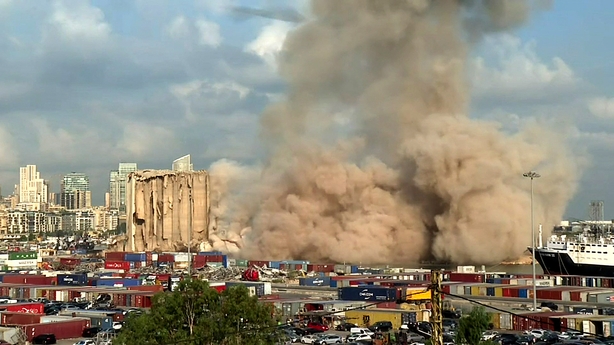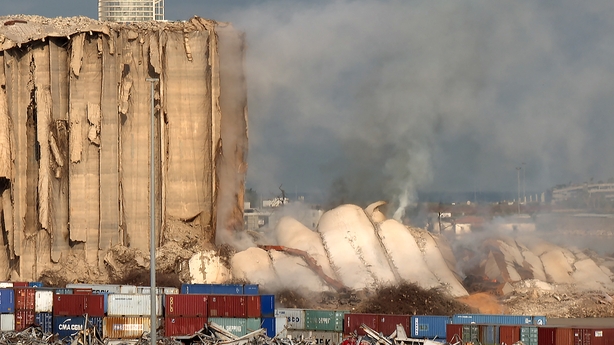Eight more grain silos at Beirut port have collapsed after they were damaged in the devastating 2020 explosion, in the third such collapse in a month.
A cloud of dust rose over the port after the collapse, which brought down the last of the northern block of silos that was more heavily damaged in the blast and where a fire had been burning since July.
The remaining southern block is more stable and not at imminent risk of collapse, said French civil engineer Emmanuel Durand, who has installed sensors on the silos.
Prime Minister Najib Mikati has sent a letter to Public Works Minister Ali Hamieh, requesting the preservation of the southern block as a memorial site.
The silos absorbed much of the impact of the massive explosion of haphazardly stored ammonium nitrate fertiliser that killed more than 200 people on 4 August 2020.

Other silos already collapsed on 31 July and on the second anniversary of the blast.
Only 12 of the original 48 silos are still standing, all of them in the southern block, Mr Durand said.
A fire has been burning in the silos for more than a month, as remaining grain stocks ferment in the summer heat.
In April, the government ordered the silos' demolition but the operation was put on hold, partly because of objections from relatives of blast victims who want them preserved as a memorial.

Minister Hamieh announced last week that the government had agreed to reserve 25,000 square metres of the port to build new grain silos.
This is larger than the current complex, which occupies a space of 21,000 square metres.
Mr Hamieh said funding would come from international donors as well as the government, which has been bankrupted by a crushing financial crisis.

